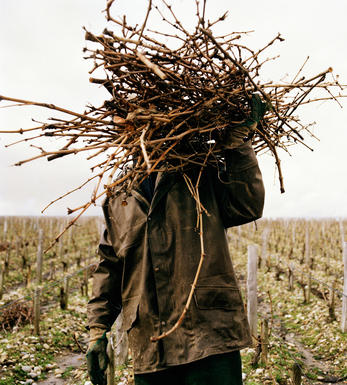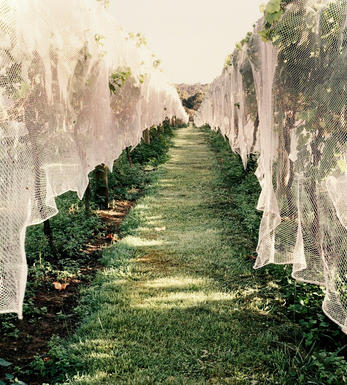
About this WINE

Chateau Grand Moulin, Corbieres
The vast and sprawling Appellation of Corbières commands, not surprisingly, a huge diversity of styles. One of the most successful is based between the enclaves of Lézignan and Boutenac, their vines dissected by the main road from Carcassonne and Narbonne.
Here the gifted winemaker of Chateau Grand Moulin Corbieres, Jean-Noel Bousquet, exploits the clay sandstone soils, and indulges his passion for Syrah, Mourvèdre and Carignan. The resulting wines sing the personality of the region, but have an elegance and suppleness of texture which is a far cry from the tougher, more rustic wines of the past.

Corbieres
A vast (ie the largest in Languedoc) and consequently oft-misunderstood appellation, Corbières covers over 12,000 hectares in the Pyrenean foot-hills, with a variety of soils and micro-climatic influences. In recognition of this diversity, the appellation was subdivided in the 1990s into 11 so-called terroirs, including Montagne d'Alaric, Lagrasse, Lézignan, Boutenac, Fontfroide, Sigean, Durban, Saint-Victor, Quéribus, Termenès and Serviès. The central limestone vineyards of Boutenac are deemed to be the best of these, and thus have their own sub-appellation.
On a terrain this extensive and this varied, four separate topographical zones may be identified: the one in the west, exposed to the cooling Atlantic influence; the coastal zone to the east, influenced by the warm Mediterranean climate; a central mountainous zone in which the Fitou appellation is also located; further north, based around the Montagne d'Alaric, the landlocked enclave which produces wines not dissimilar to those in the neighbouring Minervois.
Corbières wines have had a somewhat undeserved reputation for rusticity, and quality can admittedly still be somewhat mixed. The best examples, however, combine the concentration and herbal richness that can come from old-vine Carignan, especially when married to the so-called 'improving varieties' such as Syrah, Grenache and Mourvèdre.

Southern Rhône Blend
The vast majority of wines from the Southern Rhône are blends. There are 5 main black varieties, although others are used and the most famous wine of the region, Châteauneuf du Pape, can be made from as many as 13 different varieties. Grenache is the most important grape in the southern Rhône - it contributes alcohol, warmth and gentle juicy fruit and is an ideal base wine in the blend. Plantings of Syrah in the southern Rhône have risen dramatically in the last decade and it is an increasingly important component in blends. It rarely attains the heights that it does in the North but adds colour, backbone, tannins and soft ripe fruit to the blend.
The much-maligned Carignan has been on the retreat recently but is still included in many blends - the best old vines can add colour, body and spicy fruits. Cinsault is also backtracking but, if yields are restricted, can produce moderately well-coloured wines adding pleasant-light fruit to red and rosé blends. Finally, Mourvèdre, a grape from Bandol on the Mediterranean coast, has recently become an increasingly significant component of Southern Rhône blends - it often struggles to ripen fully but can add acidity, ripe spicy berry fruits and hints of tobacco to blends.



Buying options
Add to wishlist
Description
The unique combination of sandstone and limestone which makes up the very special Boutenac terroir is celebrated here by Jean Noel Bousquet and his gifted oenologist Robert Dejean. Corbières Boutenac is now a stand-alone Cru, something along the lines of Minervois La Livinière.
This very fine exemplar is a blend of 60% Mourvèdre and 40% Carignan, both thick-skinned and extremely expressive grape varieties when treated with suitable dexterity. The wine is still young, Mourvèdre’s Byronic recalcitrance evidenced in the form of tar and licorice and subtle intimations of roses and redemption.
Patience will be rewarded however, and, after time, the rich fruit character will gain the ascendant, with savoury notes which will make a perfect match for energetic local cuisine.
Simon Field MW, Wine Buyer
wine at a glance
Delivery and quality guarantee